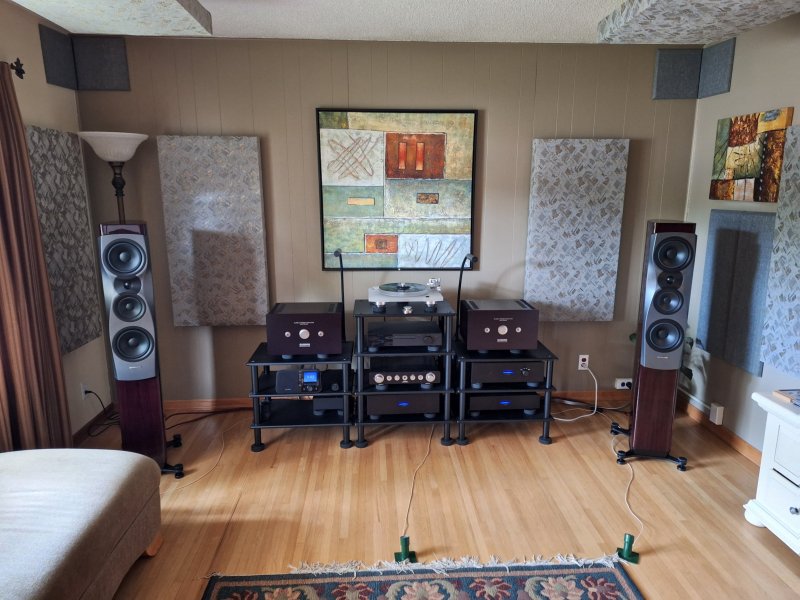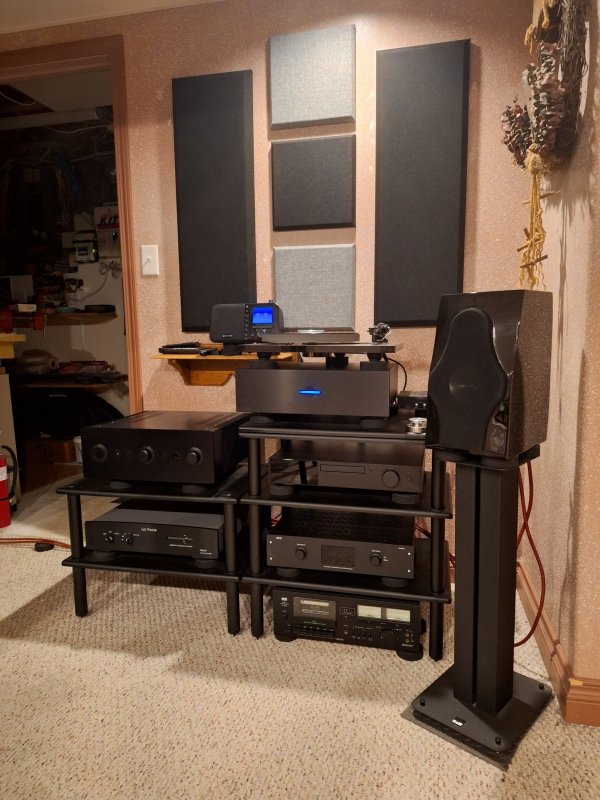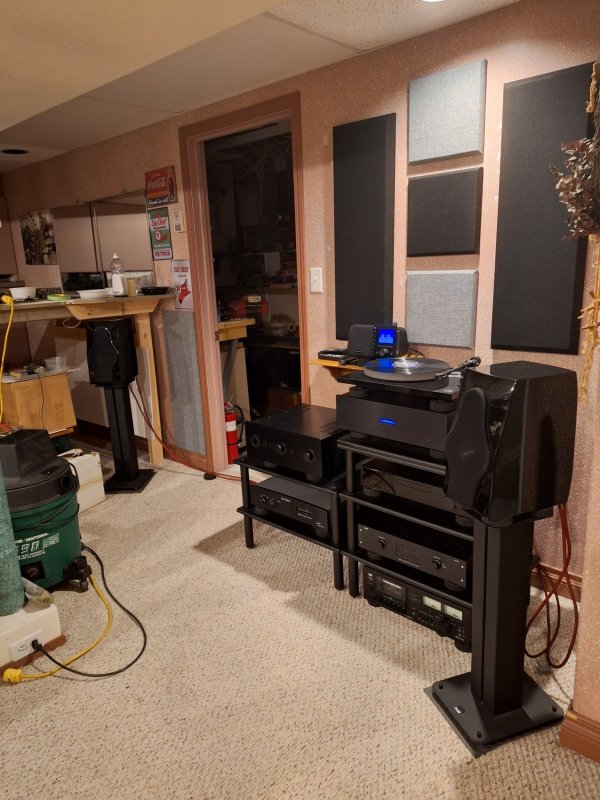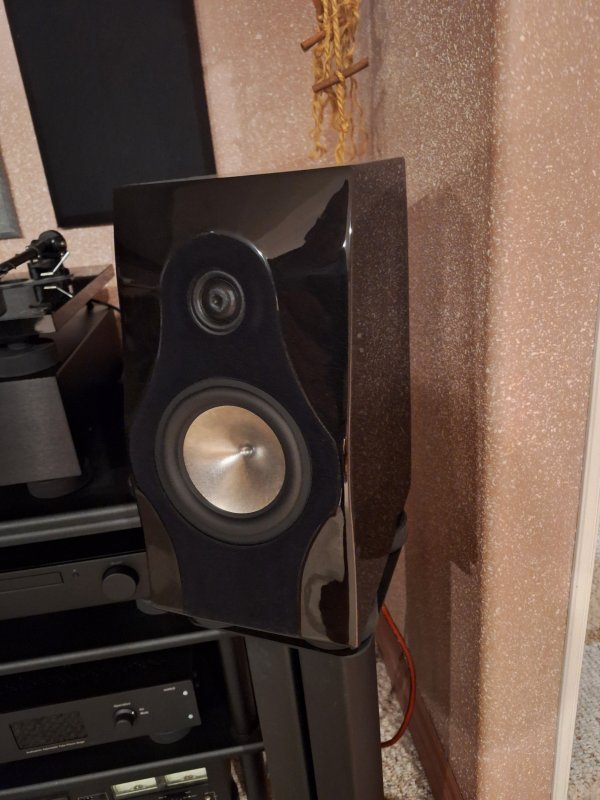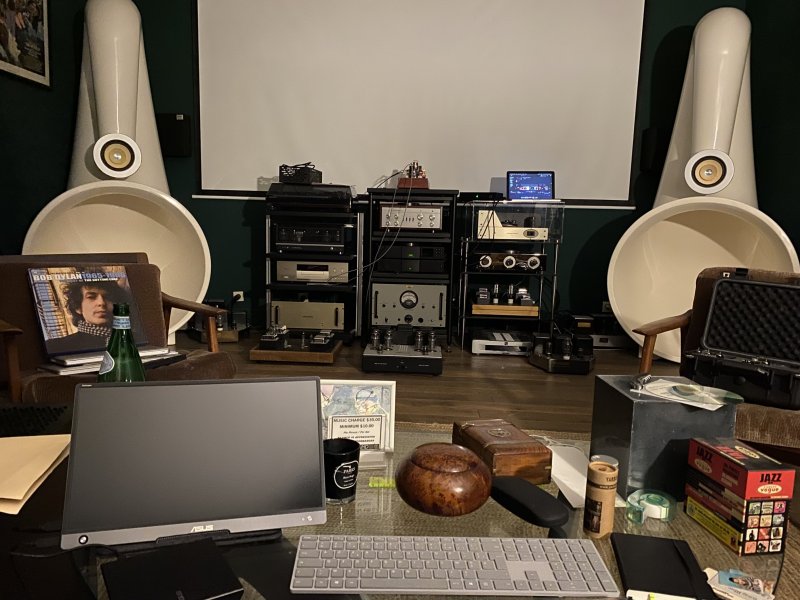These are interesting areas to experiment with vertical vs. horizontal bi-amping, not least in conjunction with hybrid or identical amp pairings. Vertical config. naturally necessitates identical amps in the frequency range they've been designated to handle per channel, but using the same, identical amps in a horizontal config. as well can bring out some illuminating findings when comparing the two scenarios, even though many feel more inclined to go with hybrid solutions in a horizontal config. - as you've done yourself.There was also a bit bass flabbiness that showed itself at higher volumes. I had always thought some of that was just my room and floor resonating, but when I reconfigured the system from a vertical bi-amp setup with identical tube amps on each side to a hybrid bi-amp setup using the twin tube amps on the mids/tweeters, and a solid state amp on the woofers to a horizontal bi-amp configuration, that issue improved a lot.
My speaker context is a purely active configuration through and through (outboard, 3-way) - that is, for both subs and main speakers - so I need separate amps to handle each driver section/way anyway. Initially I used three different amps to cover each driver section that were both power and "quality"/type differentiated (one class A for the MF/HF section, and two class D variants for the mid basses and subs respectively), but after some experimentation I wound up using essentially three similar amps top to bottom (class A/B). Doing that made for a noticeably more coherent and of-a-piece sounding outcome, worthwhile even - surprisingly - when extending the use of a similar amp into the subs region (<85Hz). More on that later.
Having similar amps to cover the main speaker frequency range would seem at first "enough" or certainly of primary concern, and adding subs mostly means buying a bundled, active solution with its own build-in and typically class D designed amp plus DSP, that is then in the need to be integrated with the (typically passive) main speakers with their own amp(s). Being however that my approach is an outboard active one, I can and must choose my own amps, and this offers some interesting findings and not least freedom into the choice of amps and what they mean across the range.
Some may scoff at the ultimate importance of the type of amp used for sub duties (say, below ~100Hz), and much fewer of them will ever get to actually experiment with it hands-on to test their preconceptions. I can say however that it matters more than I thought, and that not least using the same amp (or certainly overall topology and design) over the subs is vital in bringing about that particular sense of coherency and wholeness of presentation. Active config. only adds to that advantage, top to bottom.
Finding the proper, and essentially similar amps to cover all frequency ranges may at first seem daunting; isn't excess wattage for the top end a waste, are quality wattages wasted down low, and wouldn't amps with simply a higher damping factor and more power be the better choice here? Assuming an amp with a good power supply, plenty of power reserve and an overall sound, balanced approach in its sonic presentation, it is to my mind (and specific setup context) much more important to have a similarity of "signature" top to bottom than a "tailor made" and differentiated amp approach for each driver section. What is most striking perhaps, and what most seem to be missing out on, is the importance of the subs amp (if subs are used) for the entire presentation.
Great, and a testament to the potential of active configuration when bypassing the passive crossover.Bypassing the passive low pass woofer crossover, and adding an active low pass crossover at 80hz brought the bass to another level. Bass is now excellent when the speakers are placed appropriately, plus I have the flexibility to fine tune the crossover frequency and woofer output relative to the mids and tweeters. The whole bass range is excellent, and I'm quite pleased with it...any former areas of concern are no more.
What's interesting to me here is the use (with the Tannoy's) of a single point source per channel, and that this aspect may be essential to your preference. Are the Tannoy's "simpler" to listen to, or easier in a sense vs. the other speakers you're referring to?My mid- to high-ish end journey has taken me from Harbeth 30.2/HSU subs/BHK 300s - then wanting something with more “punch” to Focal Kanta 3s. Then an upgrade in the same direction to Rockport Atria ii’s/REL/D’Agostino Progressive Integrated. Was quite happy until oddly enough I bought a pair of Tannoy Mini Autographs for my bedroom (w/REL/Naim UnitiAtom) and discovered an entirely different approach to sound reproduction than Focal/Rockport/Magico:Wilson, et al. I went on the hunt to hear bigger Tannoy’s. I auditioned Kensington/Pathos hybrid combo which I ended up purchasing.
As incredible as these other brands are (I mention them because my listening experience is mostly of them, my perspective as a performing musician there was always felt there was something inauthentic about the “pinpoint” soundstage accuracy these brands produce so incredibly well. Maybe it’s because I’m a classical musician and more used to a live “blend” on a stage than one might hear with non-acoustic music being engineered through multiple speakers in performance. In any case, for now they suit my taste. (Which is not to say I don’t love a good Jethro Tull session).


